INSPIRATION to CREATION: Your Macrame Design Guide

From Basic Knots to Beautiful Designs: A Beginner’s Guide to Macrame
What do you do when you no longer want to follow a pattern and you want to design your own instead?
Designing your own macrame is about unleashing your creativity and turning simple cords into beautiful, unique macrame pieces.
Whether making a boho wall hanging, a stylish plant hanger, or a detailed piece of jewelry, macrame lets you bring your ideas to life with just a few knots.
This timeless craft perfectly blends endless possibilities and hands-on, meditative work, so every project feels personal and unique.
I’m excited to show you how to spark your creativity, find inspiration, and take the next step toward designing your own macrame creations.
You’re probably wondering, "Why would you do this, Nicole? Your whole business is selling us your awesome designs!”
And yeah - that is a large part of it, but in the same way that I was inspired to start designing my own projects, I want to inspire others.
My business was born out of a desire to share macrame with the world—not so that I can hide it. In fact, I would love to try some of your beautiful designs once you’ve developed them so that I can see how I’ve inspired you.
From choosing your favorite cords and colors to experimenting with different knotting techniques, designing your macrame piece is not just about making it—it’s your own.
If you’ve been following macrame patterns for a while and are ready to elevate your skills, the first step is to push your creative boundaries.
5 Tips to Challenge Yourself Creatively
If you're looking to grow as a macrame artist or want to shake things up, challenging yourself creatively is the way to go.
Whether you're stuck in a creative rut or simply ready to improve your skills, these five tips will help you step outside your comfort zone and explore new possibilities in your macrame journey.
Let’s dive in and see how you can push your creative boundaries.

Tip 1 - Define Your Purpose
Before you tackle the knots and patterns, take a step back and consider why you’re doing macrame.
Determining your purpose will shape how you approach each project, making the creative process smoother and more intentional.
Is macrame your way to relax and unwind?
Or you're hoping to turn it into a side hustle or even a full-fledged business.
Understanding your reason for knotting will help you make critical decisions, from the materials you choose to the designs you explore.
For example, if macrame is your therapeutic outlet, you might lean towards more meditative, repetitive patterns and calming color schemes.
Defining your purpose gives you direction and focus, turning a jumble of creative ideas into a clear vision.
It acts as your creative compass, ensuring every decision aligns with your goals.
By clarifying why you’re creating, you set yourself up for more meaningful and satisfying projects.
Plus, having that purpose will keep you motivated and on track when challenges arise.
Tip 2 - Set Aside Time for Creative Thinking
Creativity doesn’t just happen on its own—it needs nurturing.
That’s why carving out dedicated time for creative thinking is so important.
This is your chance to let your mind wander, explore new ideas, and dream fresh concepts for your macrame projects.
Engage in activities that get your imagination going, whether doodling in a notebook, browsing Pinterest or Instagram for inspiration, or revisiting some of your favorite macrame patterns.
These moments of creative play are essential—they fill your creative well, sparking new ideas and helping you think outside the box.
Think of this time as an investment in your creativity. It’s not about forcing yourself to come up with the next great idea on the spot but about letting your mind relax and explore freely.
Sometimes, the best ideas come when you’re not even trying.
This dedicated thinking time will help you when you face design challenges or feel stuck in a creative rut.
By regularly giving your creativity the space to breathe, you’ll be able to approach your macrame projects with a fresh perspective, bringing new life and originality to your work.
So go ahead—schedule that creative thinking time like it’s an important meeting with yourself because it is. It’s the fuel that keeps your macrame ideas flowing and evolving.
Tip 3 - Go on Creative Thinking Field Trips:
Sometimes, the best ideas come when you step outside your usual space.
If traditional brainstorming isn’t sparking anything new, it’s time for a "creative thinking field trip."
Inspiration often lies beyond your workspace, waiting to be discovered.
Take a nature walk, hike, or visit a local market, museum, aquarium, or garden—anywhere that exposes you to new textures, colors, and shapes.
These experiences can open your mind to fresh ideas.
The intricate patterns of leaves, the vibrant colors of flowers, or even the flowing movements of water can all inspire your next macrame project.
Steve Jobs famously said, "Good artists copy, great artists steal."
He wasn’t talking about plagiarism but about learning from the world around you.
Nature’s designs, like the Fibonacci sequence found everywhere, from flowers to seashells, are great examples of how beauty is already built into the world.
Observing and drawing inspiration from these existing patterns can infuse your macrame designs with new life.
Immersing yourself in different environments stimulates your senses and helps shift your perspective.
I find inspiration everywhere, whether in the architectural lines of buildings or the graceful forms of nature.
These influences ignite fresh ideas that I eagerly incorporate into my macrame.
Step outside, explore, and let your surroundings reignite your creativity.

Tip 4 - Study Your Favorite Artists' Designs:
Learning from others is one of the most powerful ways to grow creatively.
I began my macrame journey by watching a few artists on YouTube.
One artist who really captured my attention was Macrame Grida—I was fascinated by his work.
I didn’t just copy his designs but studied them closely.
I analyzed the elements that resonated with me personally and used that as a foundation for my own style.
One essential technique I incorporated into almost all my designs is the Double Half-Hitch knot—it’s so versatile and adaptable I couldn’t resist!
This process isn’t about duplicating someone else’s work but learning from it.
You can take those ideas and make them your own by understanding what works and why.
Every artist has a different approach, and by studying the techniques and styles of established macrame artists, you can gather insights that will inform your unique creative process.
The beauty of this approach is that it gives you a solid base to work from while still allowing plenty of room for experimentation.
You'll pick up valuable tips and tricks that can inspire new ideas, help you refine your techniques, and ultimately allow your creativity to flourish.
Study the details, find what speaks to you, and then adapt those ideas to create something that’s uniquely yours.
Tip 5 - Share Your Ideas and Designs:
Creativity flourishes through collaboration and feedback.
Share your macrame ideas and finished pieces on social media, and don’t hesitate to seek input from friends, family, and online communities.
Constructive criticism can provide fresh perspectives and help you grow as an artist.
Engaging with a community of macrame enthusiasts can also introduce you to new styles and techniques, expanding your creative horizons.
At Bochiknot, we have a fantastic Facebook group, Bochiknot Macrame Journey Community, where members share creations, swap ideas, and support one another, no matter their skill level.
Challenging yourself creatively in macrame is an ongoing journey of growth. You'll sharpen your skills and enrich your creative process by defining your purpose, dedicating time to creative thinking, exploring new environments, learning from others, and seeking feedback.
Embrace the challenges, celebrate your wins, and let your unique voice shine through your macrame creations.
Feeling inspired but need help figuring out where to start?
I’ve been there too.
I use six simple steps to spark creativity and jumpstart new designs.
6 Steps to Ignite Your Creativity

Creativity often strikes when we least expect it.
When I’m searching for that spark of inspiration, it all starts by diving deep into the world of macrame and embracing its endless possibilities.
Over the years, I’ve found a few go-to tips that help me unlock my creative potential, and I believe they can do the same for you.
If you’re feeling stuck or just looking to bring fresh ideas to your macrame projects, these strategies will help you tap into your creativity and breathe new life into your designs.
By immersing yourself in the art, experimenting with new techniques, and allowing space for inspiration to flow, you’ll open the door to creative opportunities in your macrame journey.
Create the Atmosphere
The most important place to start?
Your environment.
No question about it.
Your macrame workstation isn’t just where you craft—it’s your creative haven.
It’s the space where ideas come to life, where even the tiniest spark of inspiration can grow into something extraordinary.
Surround yourself with the tools you love, even if you’re unsure what you’re making.
Your cords, knots, and supplies should be right at your fingertips, ready to inspire.
Simply being in your dedicated space can jumpstart your creativity.
You might not have a complete plan yet, but that’s okay!
Start by jotting down any ideas, no matter how small or basic, and let your surroundings guide you.
A well-organized, inspiring space can turn “I don’t know what to make” into “I can’t wait to try this next idea!”
So, don’t underestimate the power of a thoughtfully crafted space.
It’s not just a place to work; it’s where your imagination gets to play.
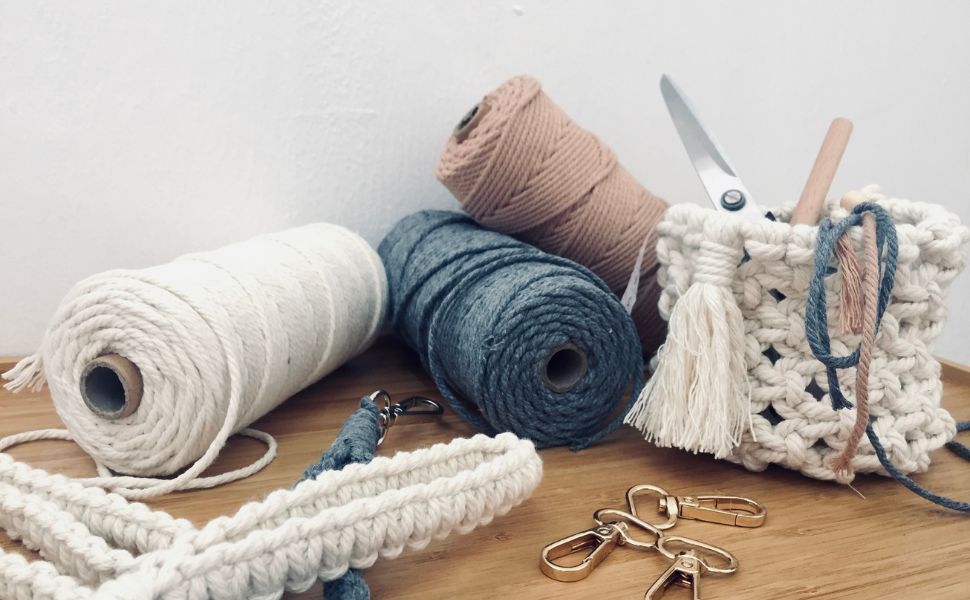
Organize Materials & Cord
Bring out all your materials and cords, even if you don’t have a specific plan yet.
Let yourself feel each piece—hold them, run your fingers over the textures, and imagine the possibilities.
Sometimes, simply handling your supplies can spark a wave of creative ideas.
Don’t be afraid to mix things up!
Try incorporating new elements like beads, feathers, or different textures into your design.
Experimenting with these can add depth, interest, and a unique touch to your macrame projects.
The key is to stay open to inspiration—even if you’re just playing around with materials, you never know when that perfect idea will strike!
The Power of Sketching Your Macrame Ideas
If you have a sketchbook, now’s the time to start doodling like a 4-year-old.
Sketching your macrame designs before you start knotting is like having a visual map—it gives you a clearer picture of where you’re going.
And don’t forget to flip through your old sketches!
You might find hidden ideas that fit perfectly into your new creation.
Your sketchbook is more than just paper; it’s your playground for ideas.
It’s a place to refine your designs, test new concepts, and visualize how everything will come together.
There’s something about putting your ideas on paper that makes them feel more natural and doable.
Most macrame patterns use basic knots, but what makes a design special is how you combine and vary those knots.
Try sketching different combinations of basic knots like Square Knots, Half-Hitches, and Double Half-Hitches.
Seeing them side by side can help you understand how they’ll work together in your project—it’s like solving a fun puzzle.
Grab your pencil, start sketching, and let your creativity flow.
It’s a simple and enjoyable way to bring your macrame ideas to life.
Cross-Pollinate Ideas
Broaden your creativity by exploring books and magazines focusing on visual arts, especially those related to fashion, design, and other art forms.
Borrowing ideas from different types of art can give your macrame designs a fresh, new perspective.
Don’t just stick to macrame—take inspiration from painting, drawing, knitting, crocheting, or weaving.
Each art form has techniques, textures, and patterns to adapt to your macrame projects.
Imagine using the bold colors of a painting or the detailed patterns of a crochet design in your next piece.
Even something as simple as the shapes and patterns from a fashion spread can inspire your next macrame creation.
The idea is to find connections between these art forms and your work.
For example, you might see a knitting pattern that sparks an idea for a new texture or a color combination in an art piece that you want to try with your cords.
Exploring other arts helps you see your designs in new ways and think outside the box.

Nature Walk
Nature is a boundless source of inspiration.
Take a break from your macrame workspace and go for a walk or hike. Immerse yourself in the sights, sounds, and textures of the outdoors.
Nature's wonders can trigger creative ideas for incorporating organic elements into your macrame designs.
Let nature guide your artistic journey, whether it's the colors of a sunset, the patterns of leaves, or the tranquility of a babbling brook.
Start Small and Get Knotting
When you're feeling stuck, take simple steps to spark your creativity.
Start by searching for macrame designs on YouTube and watching a few short tutorials to get inspired.
Don’t feel pressured to immediately create something big—use the basic knots you learned in beginner projects to make practical items.
As you start knotting and experimenting, new ideas will often come to you naturally.
Don’t be afraid to try out these new ideas as you work.
The creative process is a journey full of exploration and discovery.
Remember, macrame is more than just a craft—it’s an art form fueled by creativity and self-expression.
Surround yourself with your tools, organize your materials, sketch out ideas, explore different sources of inspiration, connect with nature, and embrace the flow of creation.
You’ll be surprised by the endless possibilities you can unlock in your macrame projects.
And if you're still looking for inspiration, a mood board is a great option—Pinterest is a macrame artist's best friend!
Bring Your Ideas to Life: How to Make a Stunning Mood Board

Creating a mood board is one of the best ways to bring your creative ideas to life.
It’s a visual tool that helps you organize inspiration, set the tone for your project, and clarify your vision before you dive into the details.
A mood board is a blueprint for your creativity if you're working on a macrame design, planning home decor, or brainstorming your next art project.
Here, I’ll show you my approach to designing a one-of-a-kind macrame piece: a seashell-themed plant hanger.
By building a mood board, I collected my ideas, refined the theme, and brought a unique vision to life. Let’s dive into the process!
Start with Your Own Designs
The best place to begin is by looking into your own portfolio.
If you’ve created macrame pieces before, take a moment to explore the patterns, textures, and elements that resonate with your chosen theme.
For our seashell-themed plant hanger, consider designs that feature intricate knots or patterns that evoke the gentle flow of ocean waves or the spirals of seashells.
Starting with your own work helps you build on your strengths and carry over elements that already reflect your personal style.
Board on Pinterest
Next, head over to Pinterest—a treasure trove of inspiration.
Create a dedicated board for your project, such as "Macrame Shells," and start filling it with images that fit your theme.
This could include previous macrame designs you’ve made that align with the seashell concept.
This step allows you to visualize your past work alongside fresh ideas, giving you a clearer picture of how to bring your vision to life.
Explore Previous Mood Boards
If you’ve made mood boards in the past, now’s a great time to review them—especially those with similar themes.
Previous boards might contain patterns or elements that fit perfectly into your new seashell design.
Perhaps there are ocean-inspired textures or color schemes you’ve explored before that can now be reimagined for this project.
Building on your previous creative foundation can offer fresh insights and save time when developing your new idea.
Explore Other Artists' Designs
Take a step outside your own work and explore the designs of other macrame artists.
Pinterest is a fantastic platform for discovering new ideas and techniques. Look for pins that inspire you—whether a unique knot or a fresh take on a seashell motif—and save them to your mood board.
Scrolling through related pins will uncover a wealth of targeted ideas that will help you refine your vision.
Remember, every artist sees things differently, and drawing inspiration from others can bring new life into your work.
Add Non-Macrame Ideas
Don't limit yourself to macrame alone to take your mood board a step further. Incorporating non-macrame elements can expand your creative horizon.
Consider adding images of actual seashells, ocean landscapes, beach scenes, and natural colors like soft blues, sandy tones, and coral accents for a seashell-themed design.
These visual references will not only inspire the aesthetics of your design but also offer creative texture and pattern ideas that you can incorporate into your knots.
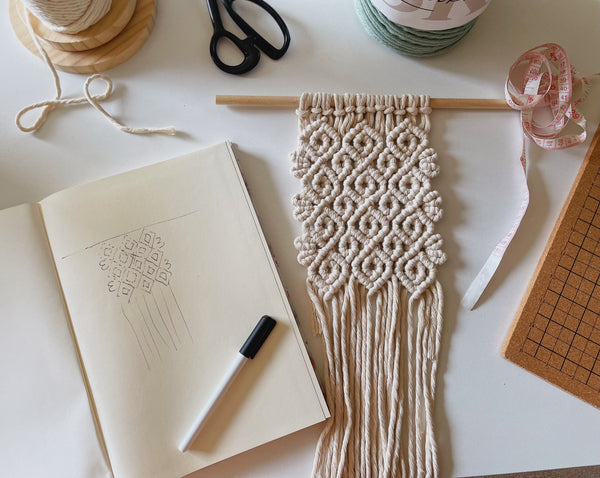
Finalize and Refine
Now that you’ve gathered a rich collection of ideas, it’s time to finalize and refine your macrame design.
Use your mood board as a creative blueprint, pulling elements from your saved pins.
Blend the macrame ideas you’ve gathered with non-macrame inspirations to create something fresh and personalized.
This is where your vision comes together—merging your skills with the creative spark you’ve found.
6 Steps to Creating Your Own Design
Starting a macrame project can be both exciting and rewarding.
As an experienced macrame artist, you know that having a clear plan is essential to turning your vision into something beautiful.
Here are my go-to steps for designing my own projects.
I’ll take you through creating a wall pocket on a ring, from picking materials to sketching your design, so you can confidently start creating your own macrame pieces.

Step 1: Define Your Project
Start by clearly defining what you want to make.
For this example, we’re creating a wall pocket on a ring.
Think about the purpose, size, and overall look you want to achieve. This upfront clarity gives you a solid roadmap for the entire process.

Step 2: Selecting Materials
Materials play a significant role in the outcome of your project.
Choose your cord size based on the knot patterns you plan to use and the size of your piece.
Do you want a smooth, single-strand cord or a textured three-ply cord?
I chose a 2-inch ring and 3mm three-ply cord for my wall pocket, which is perfect for holding small items like mail or keys.
If you want to learn more about picking the right macrame cord, check out my blog post, "How to Choose the Best Macrame Cord for Eye-Catching Designs."
Head over there for more tips!

Step 3 & 4: Determining Cord Lengths and Number of Cords
Getting the right cord length is crucial!
I use my go-to "Golden Ratio" for all my projects. Multiply the diameter of your ring by 4 or 4.5, depending on how complex your knots are.
If you're adding fringe, include that in your cord calculations. Start with the middle section cords and adjust as needed as your project develops.
Step 5: Sketching Out Your Design

Sketch out your design to put your vision down on paper.
This will act as your blueprint. Include the knot patterns, sections, and symbols to represent unique elements.
If the back view of your piece is essential, make sure to sketch that, too!
A well-thought-out sketch makes everything more manageable when you start knotting.
Additional Tips:
- Modify as You Go: Stay flexible! Be open to making changes as your project progresses. Inspiration can strike at any time.
- Plan for Fringe: If you’re adding fringe, include it in your cord measurements from the start. This helps keep your design on track.
- Pay Attention to Details: The more detailed your sketch, the smoother your project will go. A good plan sets you up for success!
Remember, macrame is all about the journey. Reflect on what you learn, enjoy the process, and know this is just one approach out of many.
Crafting your own macrame design is not only personal but deeply fulfilling!
Your First Step into the World of Macrame Design
As a seasoned knotter, you know just how important having a solid plan is.
Our steps for designing a round wall pocket gave you a behind-the-scenes look at the detailed process of creating intricate macrame projects.
But jumping into something big might feel overwhelming if you’re just getting started with macrame.
That’s why starting with smaller projects—like a simple keychain—is a great way to build your skills, practice knotting techniques, and boost your confidence.
Once you’ve nailed the basics, you’ll be ready to easily take on more complex designs, like a 3D Turtle.

Keychain is the Perfect Starting Point for Beginners
When you’re new to macrame, starting small is key (pun intended!).
Let’s explain why a keychain is an ideal beginner project and how it helps build essential skills.
Manageable Size and Complexity
A small and straightforward keychain makes it a great project for beginners who are just learning the basics.
It allows you to master fundamental knots—like the Square Knot and Half Hitch—without the overwhelm of tackling something huge.
It’s a bite-sized canvas where you can focus on learning how to handle the cords and understand the movements of each knot.
Quick Gratification
One of the best parts of starting with a keychain is how quickly you can finish it.
While larger macrame projects can take a lot of time and patience, a keychain gives you that satisfying “I made this!” feeling much sooner.
This quick win is rewarding and boosts your motivation to keep learning and move on to bigger and more complex designs.
Material Exploration:
Choosing suitable materials is a massive part of macrame, but it can be tricky for beginners.
A keychain project is a low-risk way to experiment with different types of cords, colors, and thicknesses without making a significant investment.
You can play around with different textures and see what you like, giving you more confidence when choosing materials for larger projects.
Understanding Cord Lengths:
Calculating the proper cord lengths is essential in macrame, and practicing on a smaller project like a keychain is a great way to get comfortable with this.
By applying simple cord length calculations to your keychain, you’ll start to understand how much cord you need for different knots and patterns.
This hands-on practice will build confidence and prepare you to plan more significant, detailed projects.
Introduction to Knot Combinations:
Designing a keychain allows beginners to try various knot combinations and see how they work together.
It’s a small space where you can mix and match knots, learning how they interact and flow into each other.
This experimentation is critical to developing your style and building a solid foundation for future projects.
Transitioning to Larger Projects:
Once you’ve nailed the basics, it’s time to level up.
After mastering the skills from smaller projects like keychains, you’ll be ready to tackle something bigger and bolder.
The techniques you’ve learned will serve as a solid foundation, giving you the confidence to dive into more intricate designs—like a 3D Seahorse.
You’ll be amazed at how much your skills have grown, and trust me, there’s nothing more exciting than seeing those complex creations come to life.

Room for Creativity:
Even though a keychain is small, it’s full of creative possibilities.
Beginners can experiment with color combinations, add beads or charms, and play with different fringe lengths, giving each piece a personal touch.
While making a round wall pocket with a ring is tempting, starting with a keychain is a bright and fun way to begin your macrame journey.
It’s a simple project that helps you build your skills, boost your confidence, and develop an appreciation for the craft.
As you knot your first keychain design, you’re laying the groundwork for a rewarding journey into the endless possibilities of macrame.

Remember, your macrame journey isn’t a straight line—it’s a creative process that is constantly changing and growing.
Embrace the challenges, celebrate the wins, and let your unique style shine through in everything you make.
Whether you’re crafting keychains, wall hangings, or detailed 3D sculptures, each knot tells a story, and every piece reflects your artistic spirit.
So, fellow macrame lovers, use your imagination, knot with passion, design with intention, and enjoy every moment of creation.
Share your experiences, learn from each other, and let the world see the beauty in your framework.
And if you’re ready for even more, join us inside the Bochiknot Macrame community, where I have an entire course and exclusive content all about designing your own projects!
Much love,

P.S.
We’ve created a dedicated series of blogs to help guide you through every stage of your macrame journey!
You have just completed the "INSPIRATION to CREATION: Your Macrame Design Guide" of your Bochiknot macrame journey.
To catch up on the other blogs in this series, check them out here:
- START HERE: The Complete Beginner’s Guide to Macrame
- 12 Fun & Easy Macrame Projects to HELP YOU Get Started
- Macrame ESSENTIALS: Everything You Need—Cord, Tools, & Materials
- 9 SECRET Macrame Tips You’ve Likely Never Heard Of
- Turn Ordinary into EXTRAORDINARY: Adding Embellishments to Macrame
- Knots & Knot-Tying Techniques for STUNNING Patterns
- Macrame's GOLDEN Ratio: How to PRECISELY Measure Cord for Projects
- Introduction to Intricate Macrame Knot Patterns (MADE-EASY)
Up Next:
Make sure to subscribe to our email newsletter at the bottom of this page to stay updated on all the latest tips, tutorials, and updates. You won’t want to miss out!


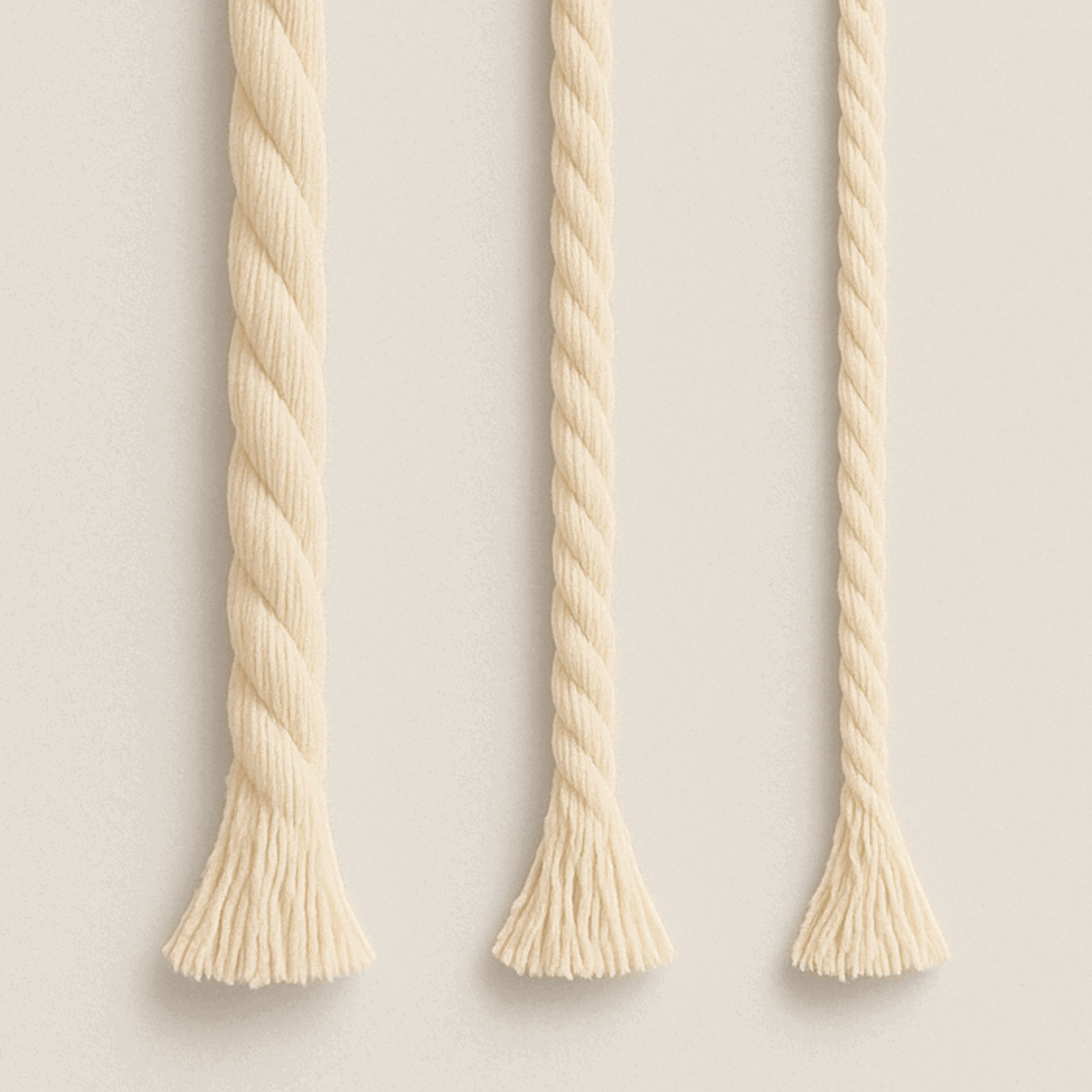
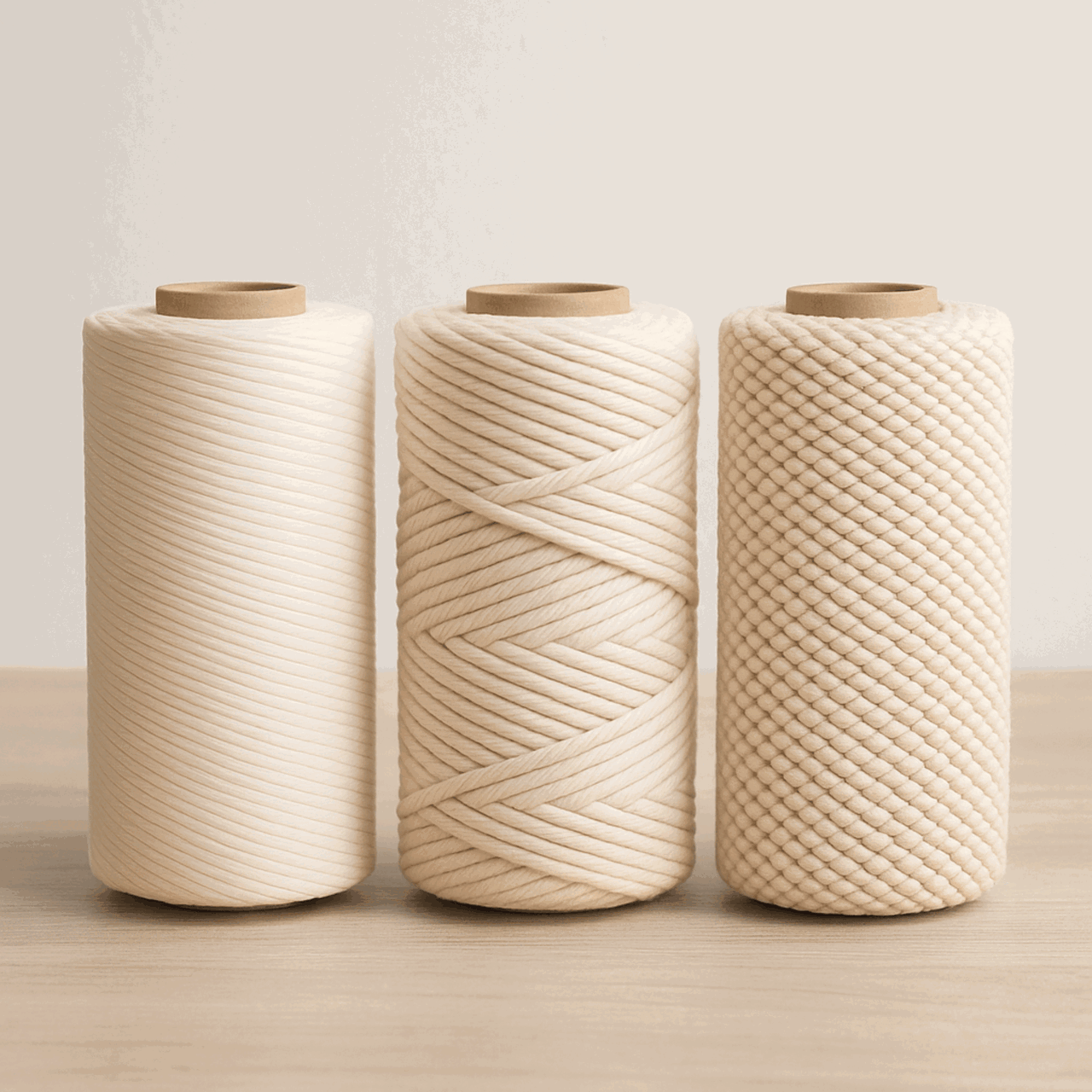

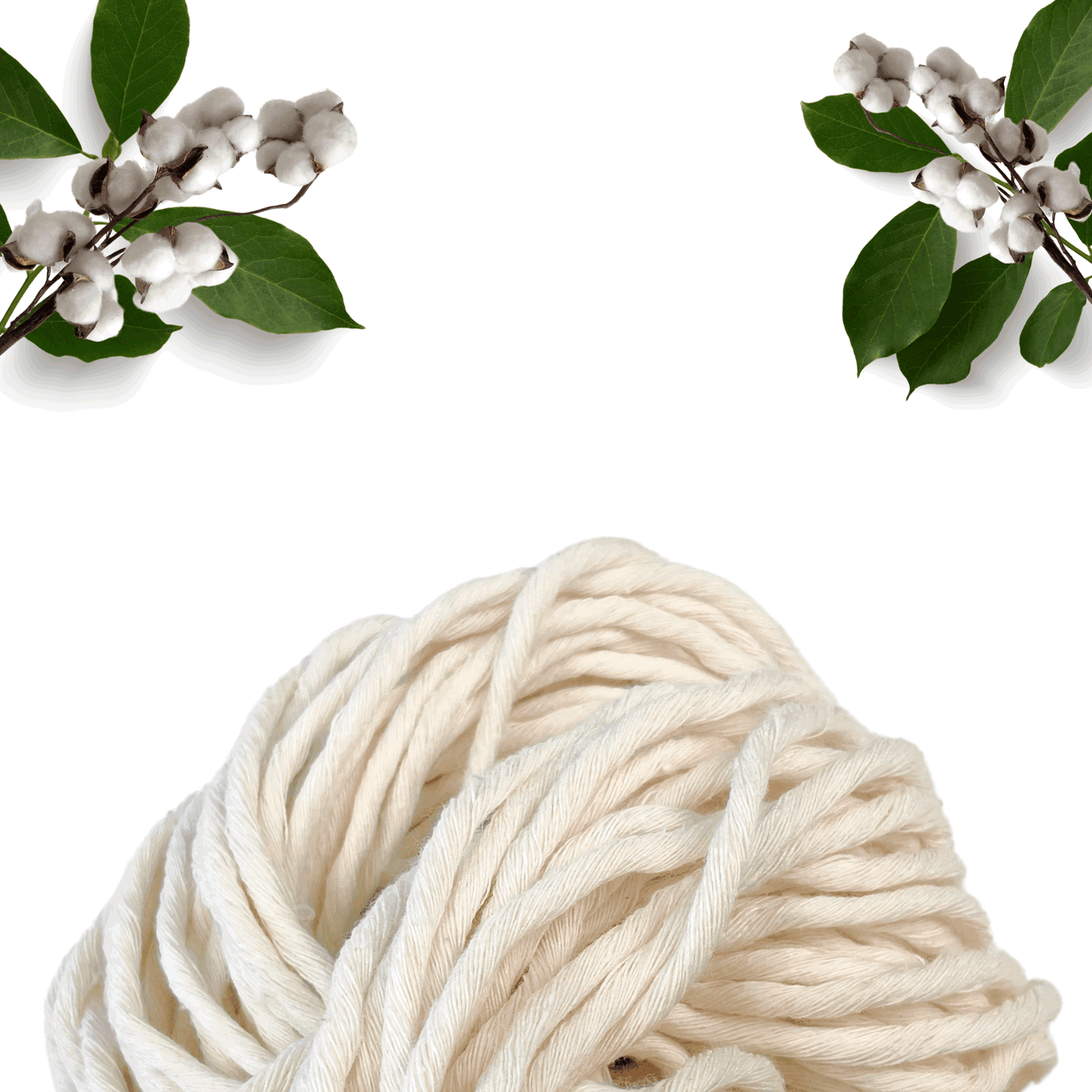

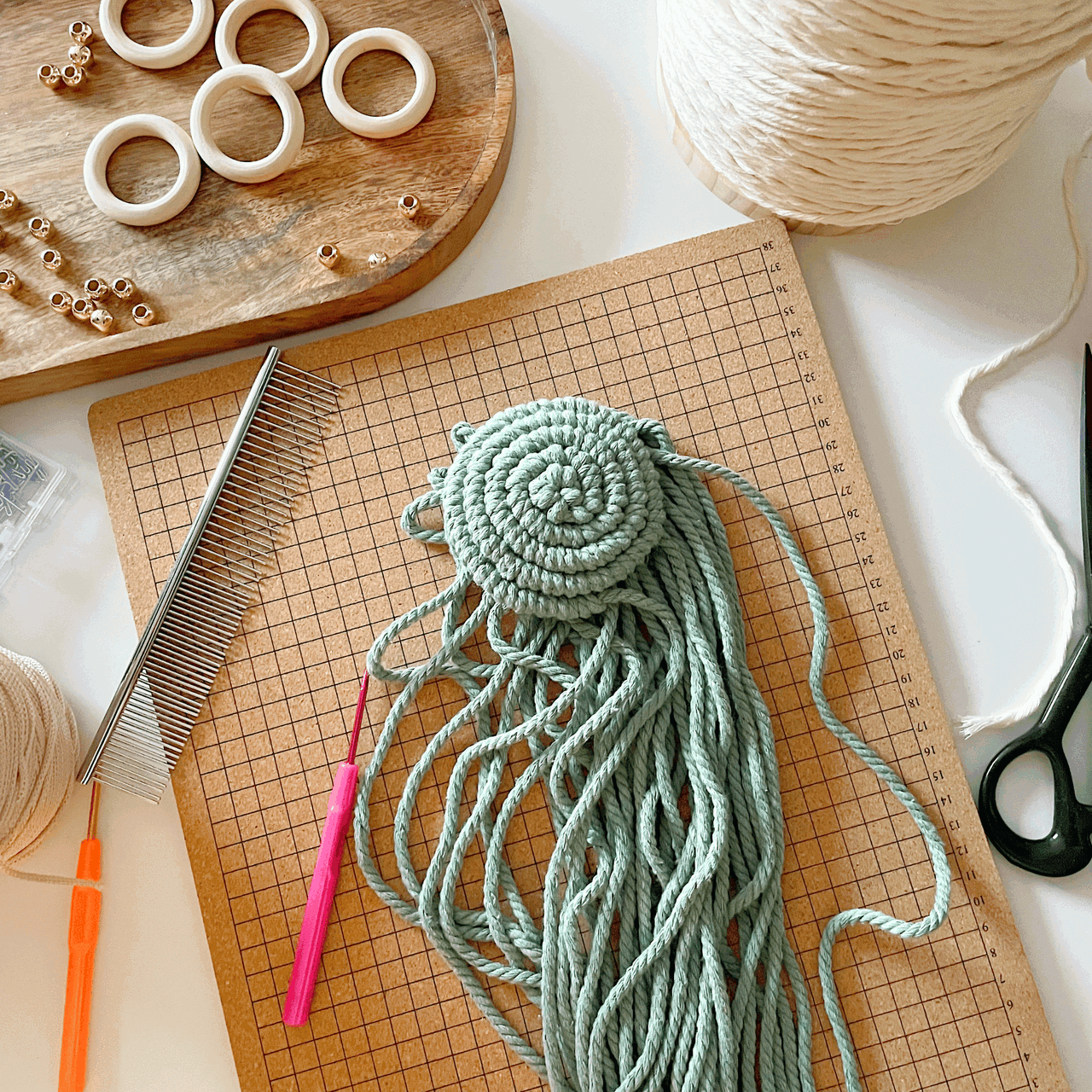



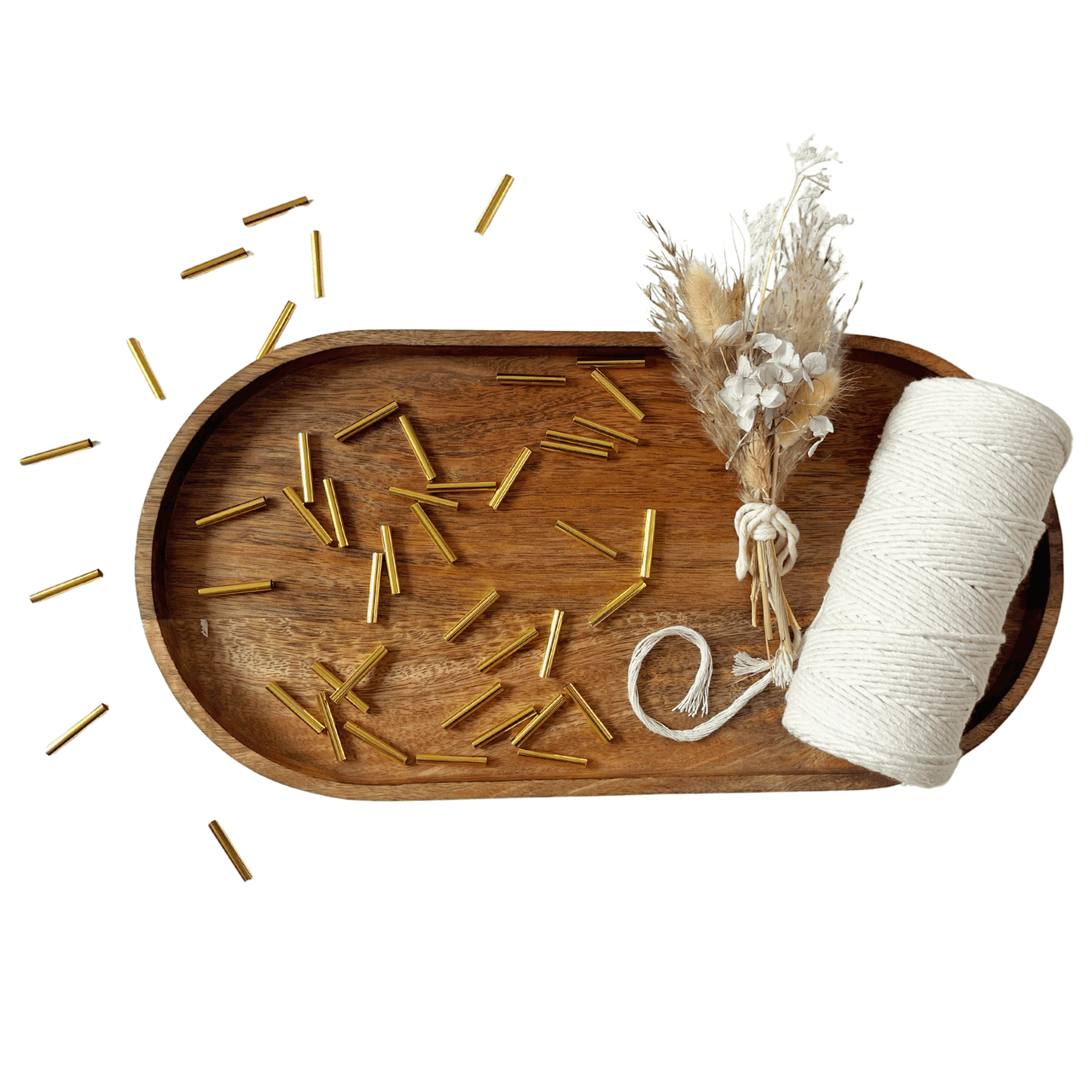

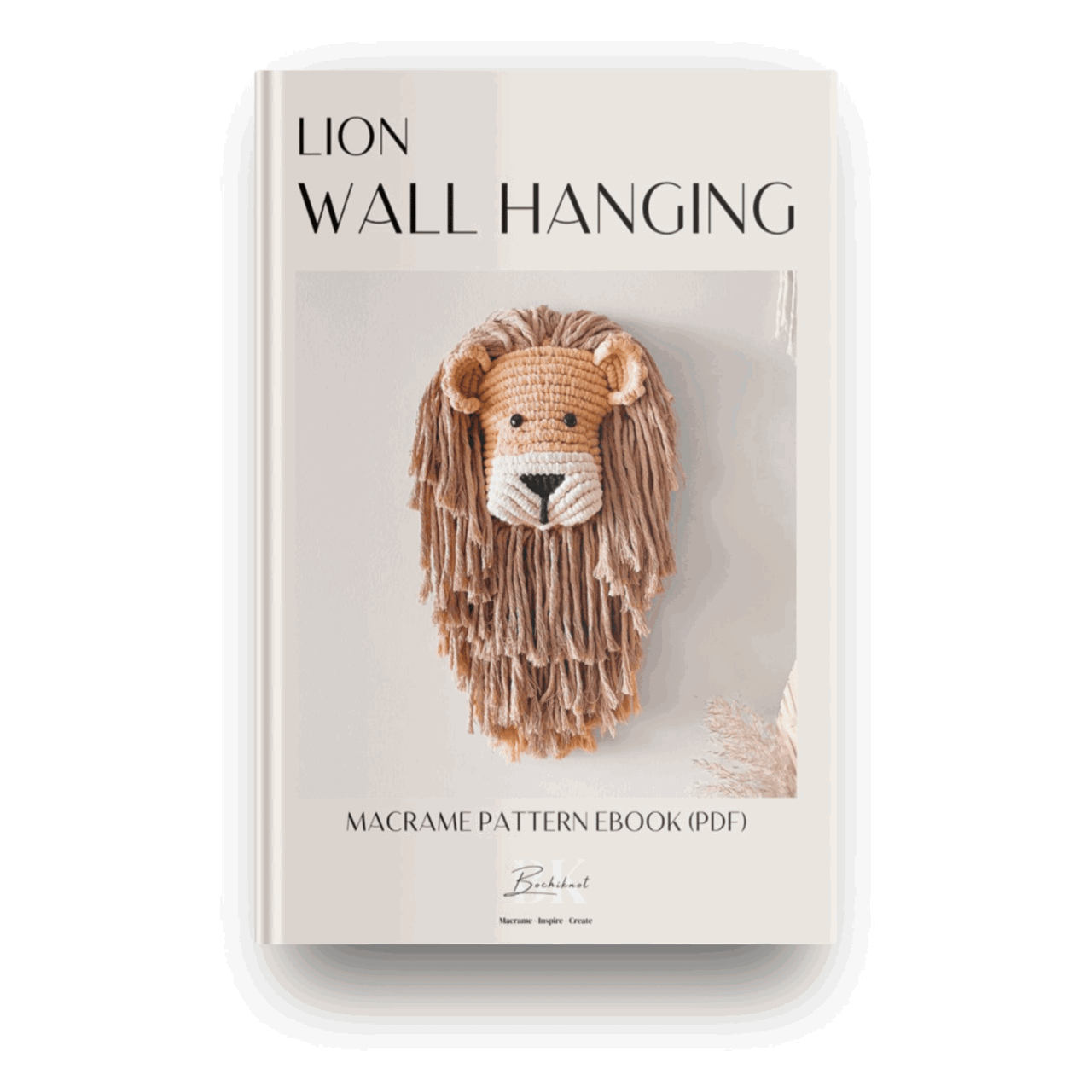
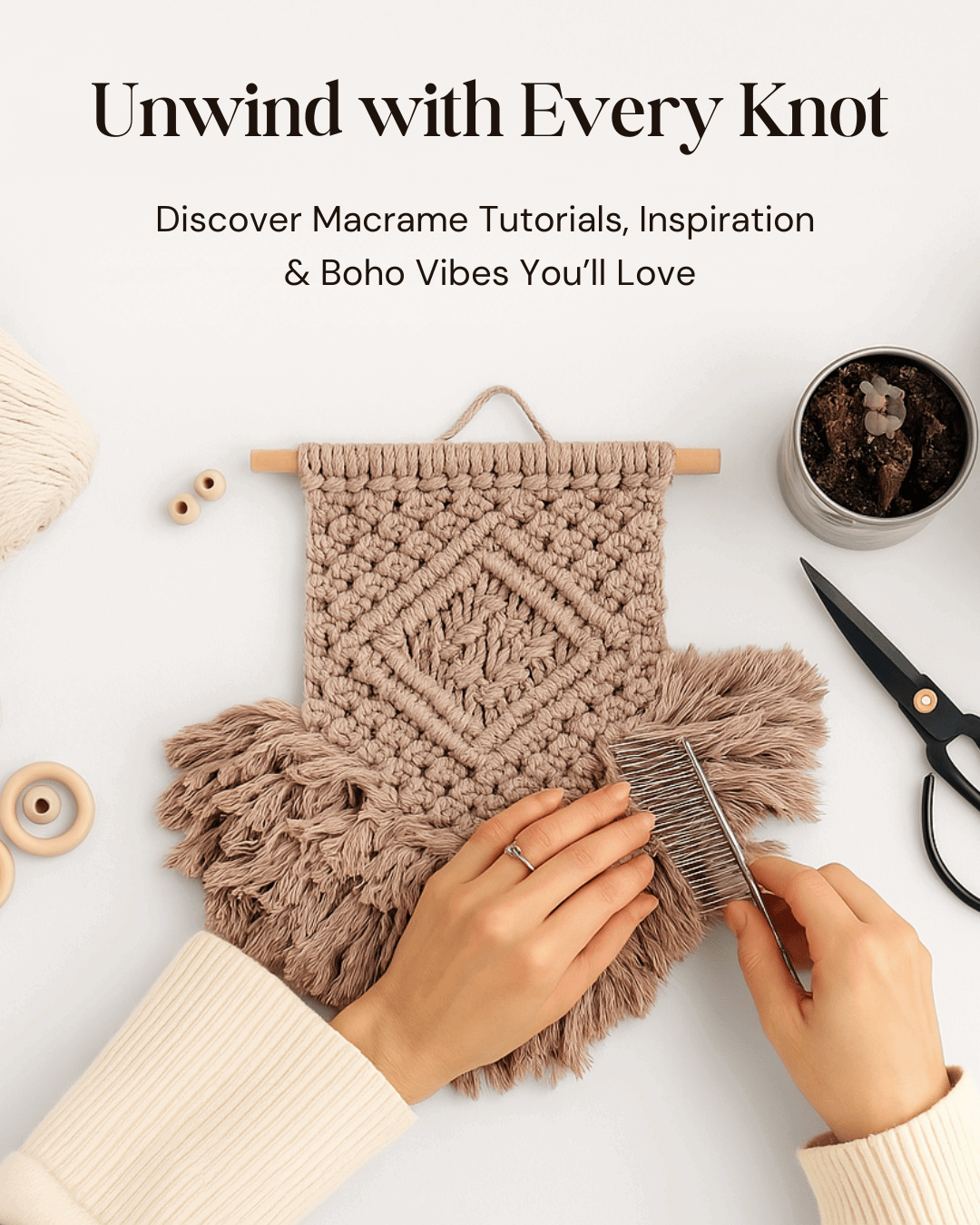
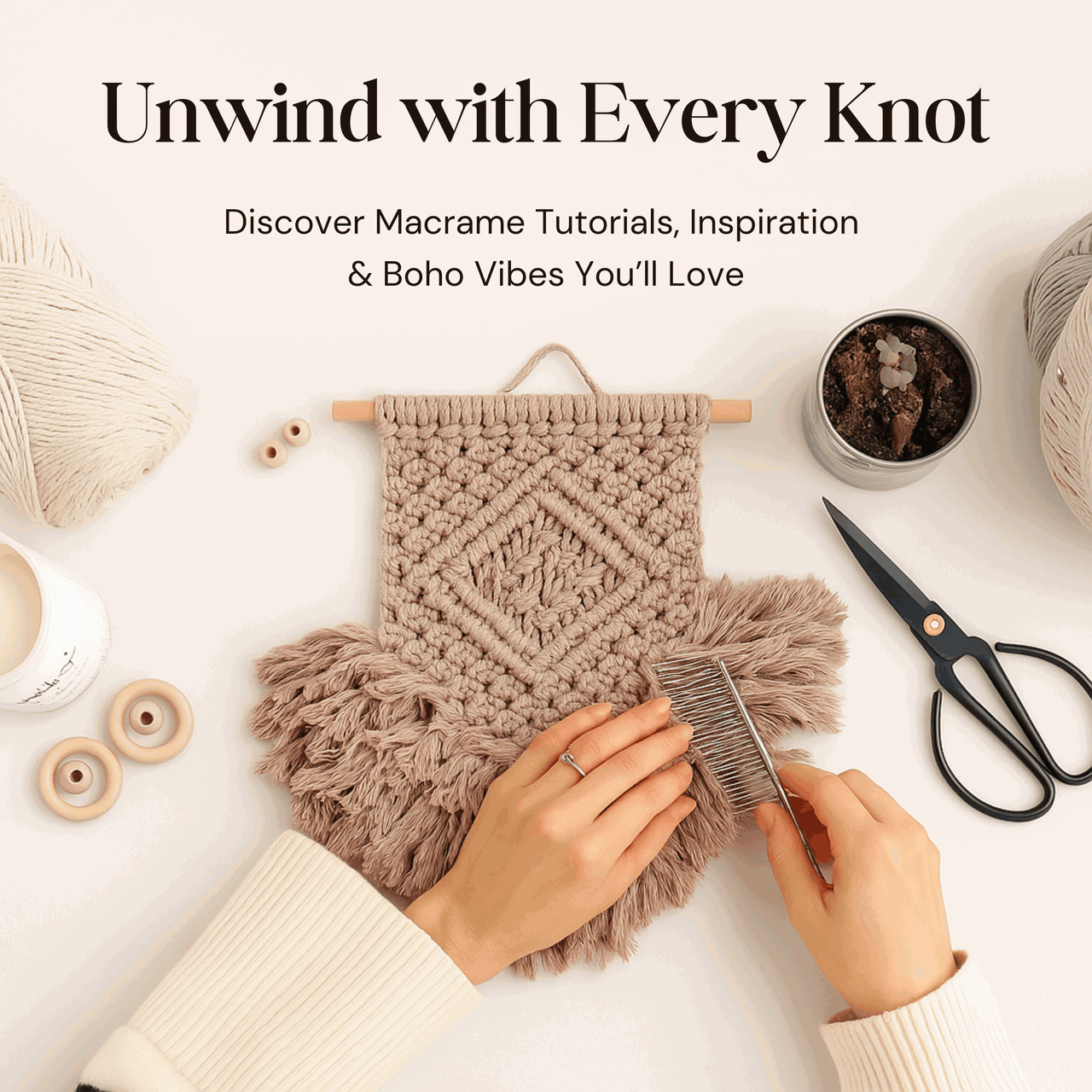


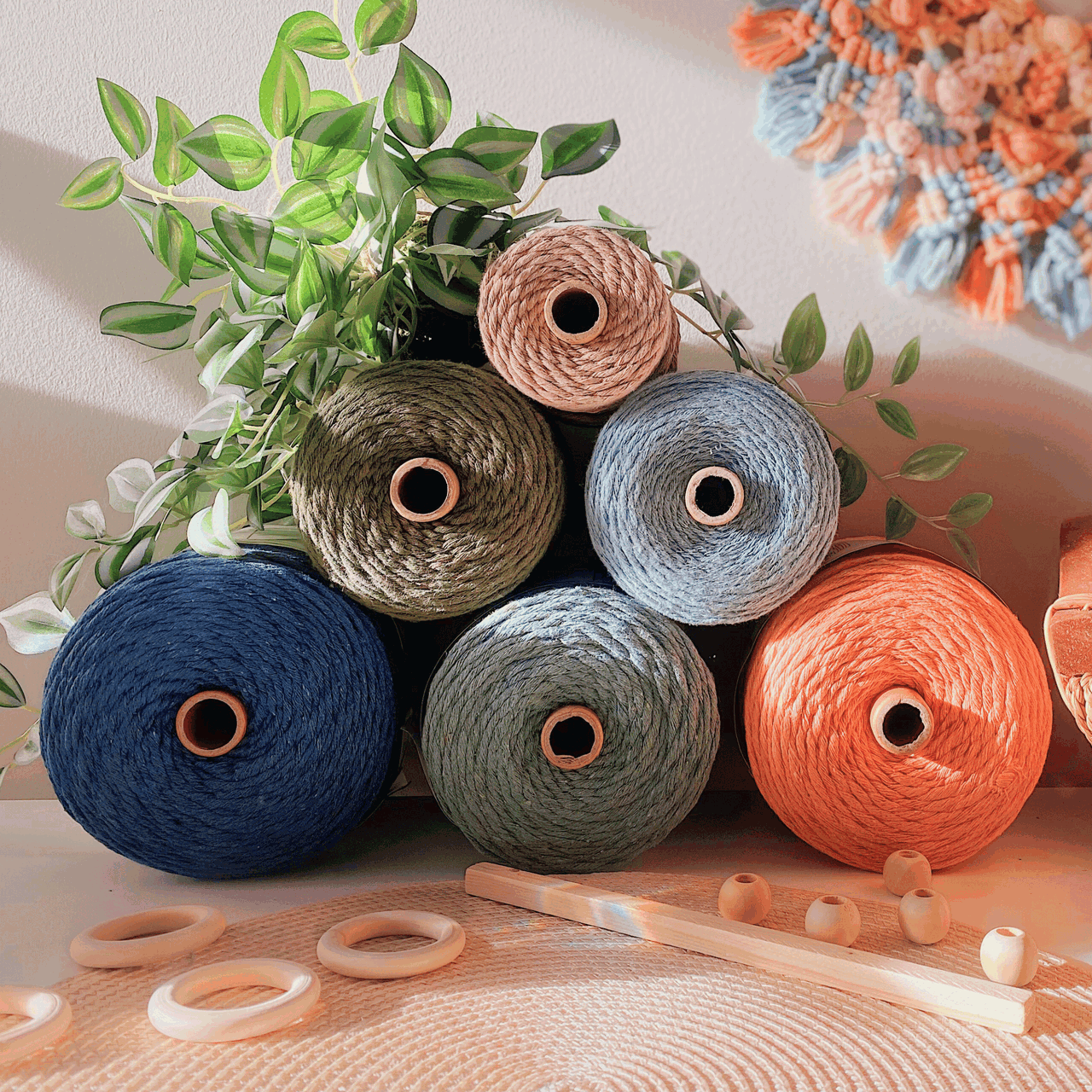
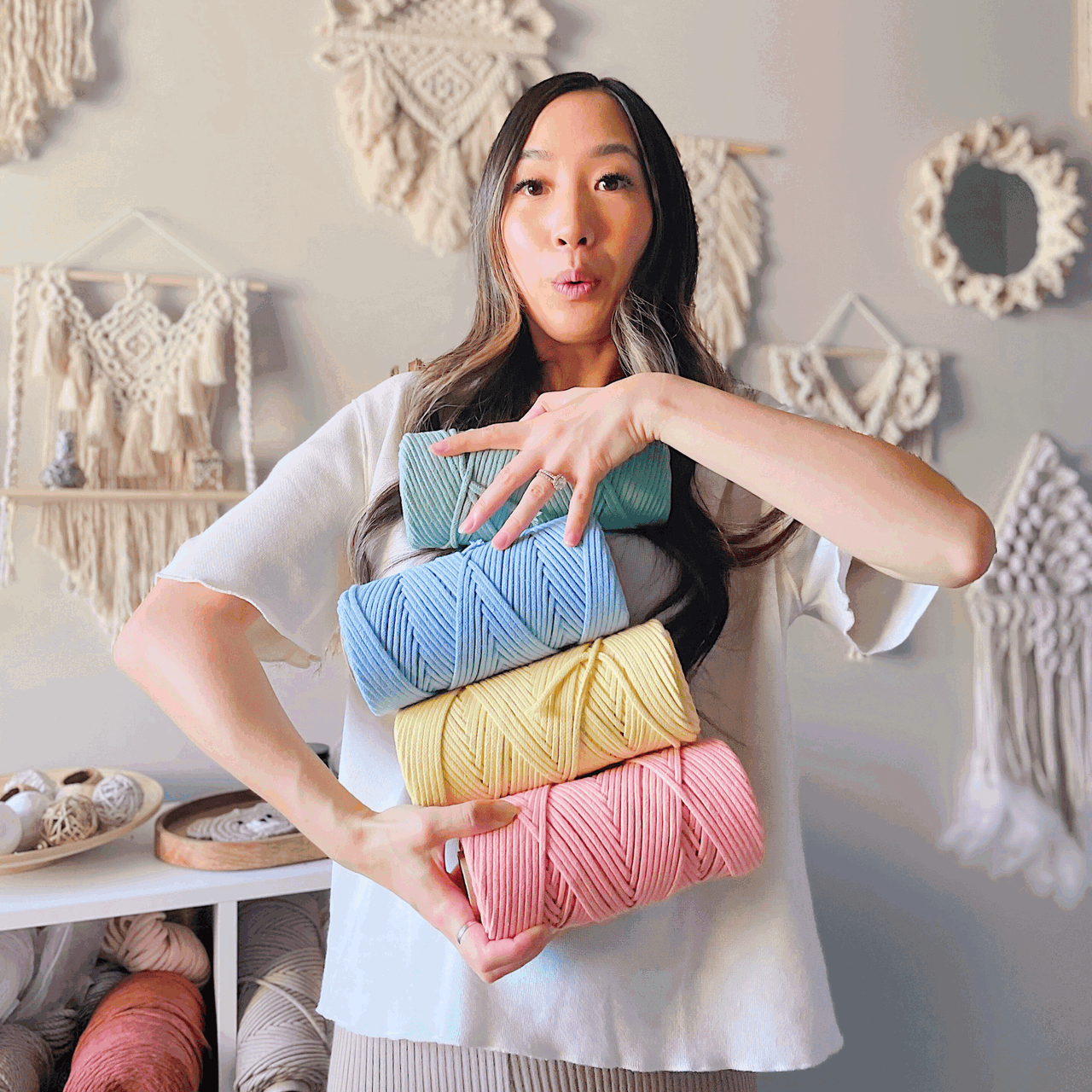
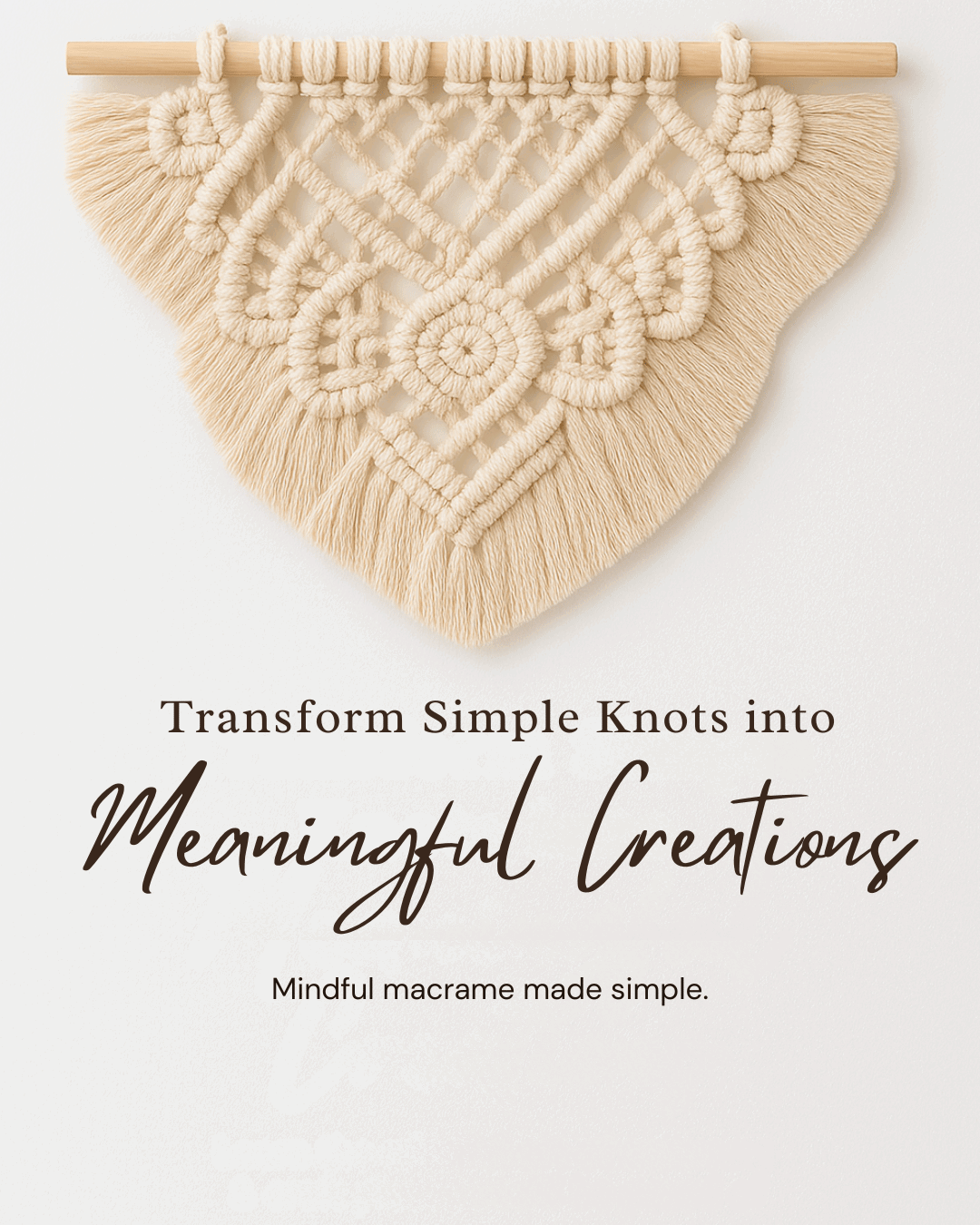



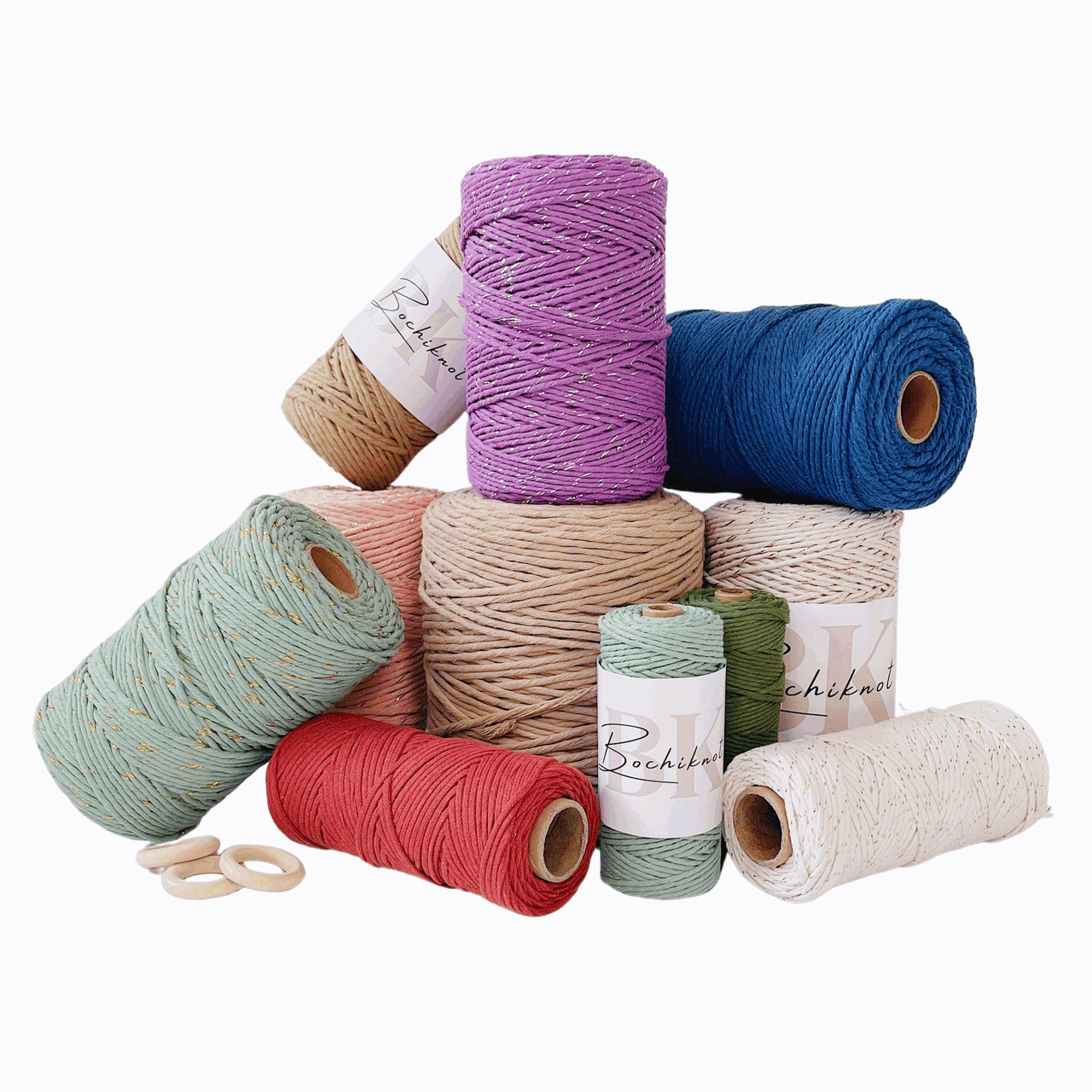










Leave a comment